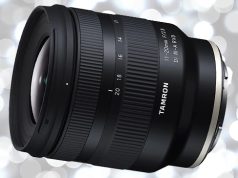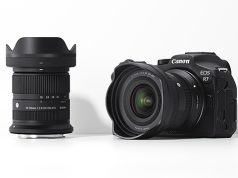
The performance parameters of today’s cameras are simply astonishing. Most entry-level and middle tier DSLRs incorporate image sensors with resolutions ranging from 18–24 megapixels, provide blistering burst rates of 7 fps and higher, and shoot Full HD 1080p video at various frame rates.
Sophisticated point-and-shoot models aren’t far behind, with 12–20MP sensors, 1080p video capability and full-res burst rates of 5–10 fps. Of course, pro and prosumer DSLRs exceed these specs, with sensors in the 20–36MP range, 12-fps bursts, deep buffers and phenomenally rapid image processing.
Flash memory card manufacturers have responded with a veritable explosion of high-capacity, high-speed memory cards with incredible read and write speeds and enhancements aimed at increasing reliability and security. They store huge high-res files at blistering rates of 90MB/sec and above—and many qualify as high-margin, big-ticket accessories.
Memory card makers are ferociously battling to provide cards with greater storage capacity, faster read/write speeds and greater reliability than anybody dreamed possible. Just as important, savvy shooters now realize that such cards are must-haves that can spell the difference between capturing a blazing high-speed sequence or extended HD video clip in all its glory or truncating it unexpectedly with missed frames or video dropouts.
We’ve gathered the pertinent facts about high-speed, high-capacity memory cards and present them along with a selection of the latest cards.
Storage Capacity: Bigger Is Better—and More Convenient
The storage capacity of a memory card is generally given in gigabytes (GB), with the number in front of the GB representing the number of images (or the recording time of video files) the card can hold. For example, since 1GB equals 1,000 megabytes, if you shoot RAW files of 24.5MB each with an 18MP DSLR, you can store about 650 full-res images on a 16GB card. The higher resolution ratings of today’s cameras are the reason why 16GB is now considered the threshold of “high capacity”; 32GB, 64GB, 128GB and even larger capacity cards are popular with pros and enthusiasts, who tend to use higher res cameras, shoot at faster framing rates and record more HD video.
It’s also an underlying factor that has ignited the memory card speed race—because the more capacity you’ve got, the more important a higher throughput rate becomes. This is especially true if you want to shoot extended bursts of RAW+JPEG images at 5 fps and faster, or record longer 1080p video clips without the camera shutting down, dropping out frames, corrupting the files or taking forever to display them. Of course, the camera itself, and its buffer, must be able to take advantage of super-speed cards. By the way, flash memory is a bargain that’s literally hundreds of thousands of times cheaper per unit than it was in the 1990s.
SD Speed Class Ratings: More Megabytes per Second
The speed class rating of SD cards, the official unit of speed measurement adopted by the SD Association, is defined as 8 megabits per sec, which is equivalent to 1 megabyte per sec (1MB/s). Since 8 megabits equals 1 megabyte, a Class 2 card is rated at 16 megabits/sec, or a throughput rate of 2MB/s; Class 4 cards record up to 4MB/s, Class 6 to 6MB/s and the current Class 10 to 10MB/s. The SD Association’s UHS Speed Class 1, designed for a UHS (Ultra High Speed) bus interface, is the fastest performance category available, with a theoretical bus-interface speed limit to an incredible 312MB/s for greater performance with host SDHC and SDXC cards.
Please note the aforementioned numerical speed classes are not interchangeable, and not all products (including card readers and cameras) are compatible. Always pay close attention to the units specified, since a megabit speed rating may seem faster than it is.
While the speed class ratings listed by manufacturers are important, they aren’t generally verified by independent tests, so they may not always be attainable in devices that require sustained write throughput, such as camcorders or full-frame DSLRs capturing RAW+JPEG images at high burst rates. If the actual write speed falls below the speed required by a camcorder or a DSLR in HD video mode, the recording could suffer dropouts or corrupted video. The good news is that the camera usually warns the user if an inappropriate card is inserted or if the card’s reported rate falls below the application’s requirements. Obviously, one way to obviate potential problems like this is to sell your customers cards with higher speed ratings than the minimum required—more expensive, more profitable and well worth it for critical applications.
X Ratings: Throughput at Breakneck Speeds
Before speed class ratings there were numerical “x” ratings, still the most common system used for CF cards and also by some SD brands. Basically, 1x is equivalent to 1.2 megabits per sec, the same speed as a standard CD-ROM drive. This is equivalent to a throughput rate of 155 kilobits per second (Kb/sec). It follows that a 100x card would have a theoretical maximum throughput rate of about 15MB/s and a 133x card would have a rate of 20MB/s. The latest Ultra class or Extreme Pro CF cards on the market can save data at impressive rates of 100MB/s and above. They often carry a UMDA rating, an acronym that stands for Ultra Direct Memory Access. For example, a SanDisk Extreme Pro CF card with a 100MB/s maximum throughput rate is labeled UDMA 7.
To convert a numerical x rating into MB per sec, multiply the rated speed number by 155,000 and convert the result to megabytes by moving the decimal point six places to the left. If you think 90MB/s is fast, consider that one current SDXC card is rated at 625x—that’s a blistering 97MB/s. Everything from the cameras and their processors to card readers, data transfer protocols and the internal computer RAM has to handle this amount of data at warp speeds.
SDXC: It’s Bigger and Faster, but Watch the Formatting!
The Secure Digital eXtended Capacity (SDXC) format was launched in 2009 with a maximum capacity defined as 2TB (terabytes), equivalent to 2,048GB. Older SDHC cards have a similar theoretical capacity, but it’s limited to 32GB by the SD 2.0 specification. The initial run of SDXC cards adheres to the SD 3.0 standard that still specifies the FAT32 file system. That limits its capacity and speed to just 104GB/s. Some of the latest SDXC/SDHC cards conform to the SD UHS-1 protocol that uses the exFAT (Extended File Allocation Table) file system with the inherent capacity to attain read/write speeds to 312MB/s!
Warning: Once an SDXC card has been improperly formatted in a noncompatible device, it is no longer an SDXC card and that indeed is a problem for anyone who shelled out a couple of hundred bucks or more. Fortunately, SDXC devices are backward compatible with SD/SDHC cards but the reverse is not the case.
Herewith is a brief rundown on some of today’s high-capacity, high-speed memory cards.
Lexar Professional SDXC 600x UHS-1. This ultra-high-speed card delivers blazing 600x (90MB/s) guaranteed transfer speed, and its top 256GB capacity can capture extended-length Full HD 1080p video with SDXC-compatible DSLRs, camcorders and 3D cameras. It is claimed to transfer files from card to computer at speeds that dramatically accelerate workflow, and it comes with Image Rescue 4 software to recover lost or deleted files—and free tech support. MSRPs: 256GB, $999.99; 128GB, $499.99; 64GB, $279.99. lexar.com
SanDisk Extreme Pro CompactFlash UDMA 7. Employing the latest memory technologies to expand the capacities of the latest high-res cameras, this ultra-high-speed UDMA 7 card provides a sustained read/write speed up to 90MB/s and (in 128GB capacity) 100MB/s write speeds. The UDMA interface assures high-speed data transfer between card and camera, and it provides VPG (video performance guarantee) for flawless Full HD video quality. It can also operate in temperatures ranging from -13ºF to 185ºF. 128GB, 100MB/s, $1,499.99; 64GB, 90MB/s, $799.99; 32GB, 90MB/s, $449.99; 16GB, 90MB/s, $249.99. sandisk.com
Kingston SDXC Class 10 Ultimate. Geared for Full HD and 3D video, and high-res photography, this Class 10 card has a minimum 10MB/s write speed and features optimized recording performance with support for the exFAT file system. It has a built-in write protect switch to protect against accidental file loss and is constructed of nonvolatile components for enhanced reliability. The card comes with 24/7 live tech support. 64GB, $115; 32GB, $57; 16GB, $30. kingston.com
PNY Technologies Pro-Elite SDHC Class 10 UHS-1. This high-performance Class 10, 233x card provides write speeds of 35MB/s and read speeds of up to 50MB/s. It is claimed to be magnet-, water- and shockproof as well as work in temperatures of -13Fº–185ºF. It comes with a limited lifetime warranty. 32GB, $44.99; 16GB, $29.99. pny.com
Sony SDHC UHS-1. Ideal for shooting with high-res DSLRs in demanding applications, such as fast bursts and Full HD video, these cards provide a read rate up to 94MB/s and a sustained read/write rate up to 40MB/s. They maintain the Class 10 speed even when used with non UHS-1-supported hardware and come with File Rescue. 64GB, $144.99; 32GB, $79.99; 16GB, $46.99; 8GB, $29.99. sony.com
Hoodman Raw Steel SDHC Class 10 UHS-1. With chip-onboard technology, this card features miniaturized components so flash and circuitry are all one piece with no solder joints. The miniaturization also allows for thick casings and the addition of a stainless steel plate. Designed for high-performance still imaging and video, the waterproof Class 10 UHS-1 card provides read/write speeds up to 45MB/s and a speed rating of 300x. 32GB, $89.99; 16GB, $49.99; 8GB, $29.99. hoodmanusa.com
Toshiba FlashAir Wireless SDHC Class 6. This ingenious card can be used like an ordinary SD card but also includes a wireless LAN chip plus an antenna for communications. This enables access to the data stored on the card without having to remove the card or plug a cable into the host device. Users simply connect the remote host by linking it to the wireless LAN access point of the FlashAir card, start the browser tool and all the photos and videos on the card are read and transferred wirelessly to the remote host—a smartphone, PC or tablet. It also shares data on multiple locations simultaneously. The card comes in a jewel case with a user manual and five-year limited warranty. 8GB, $79.99. us.toshiba.com





